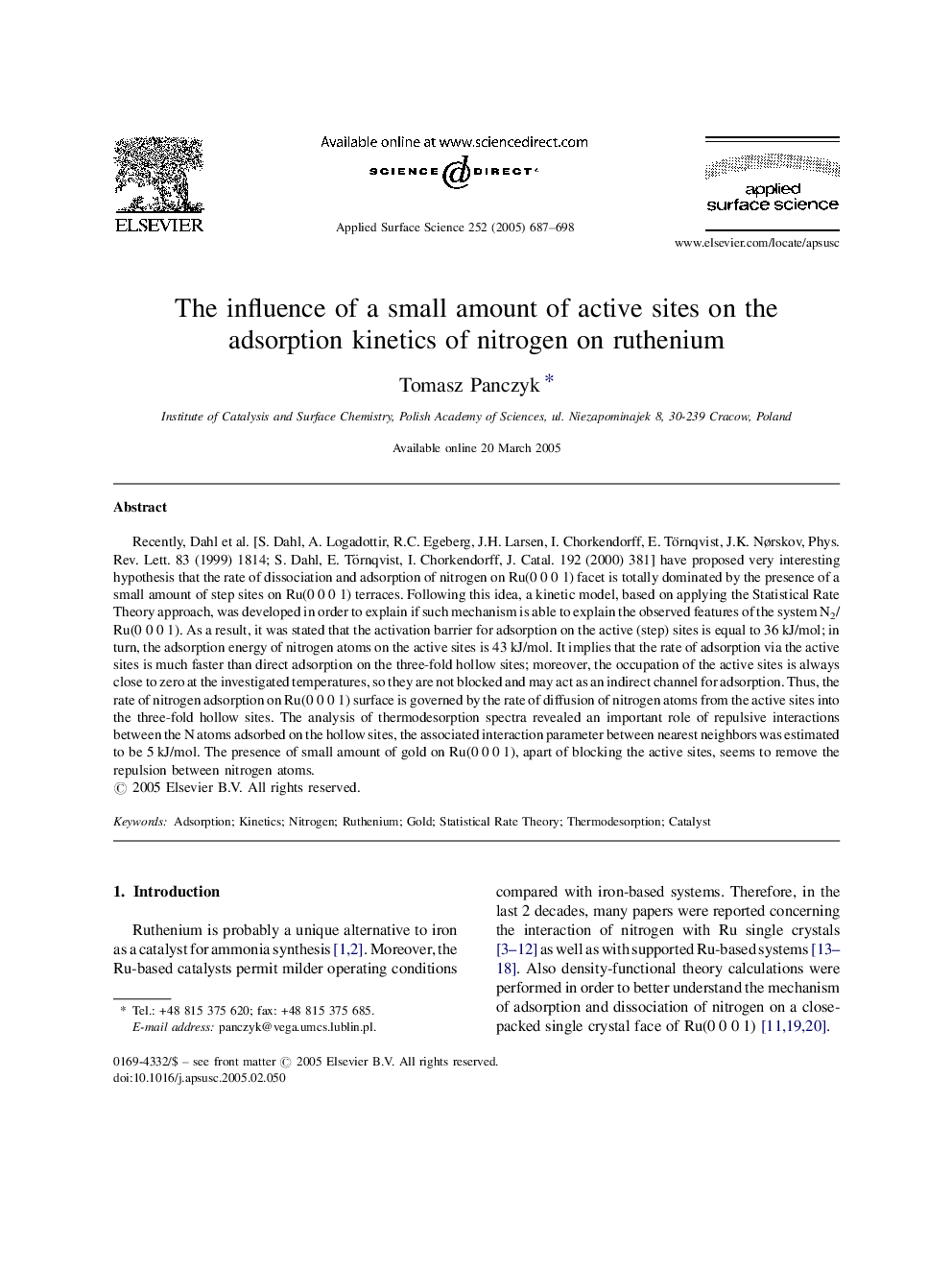| Article ID | Journal | Published Year | Pages | File Type |
|---|---|---|---|---|
| 9566749 | Applied Surface Science | 2005 | 12 Pages |
Abstract
Recently, Dahl et al. [S. Dahl, A. Logadottir, R.C. Egeberg, J.H. Larsen, I. Chorkendorff, E. Törnqvist, J.K. Nørskov, Phys. Rev. Lett. 83 (1999) 1814; S. Dahl, E. Törnqvist, I. Chorkendorff, J. Catal. 192 (2000) 381] have proposed very interesting hypothesis that the rate of dissociation and adsorption of nitrogen on Ru(0 0 0 1) facet is totally dominated by the presence of a small amount of step sites on Ru(0 0 0 1) terraces. Following this idea, a kinetic model, based on applying the Statistical Rate Theory approach, was developed in order to explain if such mechanism is able to explain the observed features of the system N2/Ru(0 0 0 1). As a result, it was stated that the activation barrier for adsorption on the active (step) sites is equal to 36 kJ/mol; in turn, the adsorption energy of nitrogen atoms on the active sites is 43 kJ/mol. It implies that the rate of adsorption via the active sites is much faster than direct adsorption on the three-fold hollow sites; moreover, the occupation of the active sites is always close to zero at the investigated temperatures, so they are not blocked and may act as an indirect channel for adsorption. Thus, the rate of nitrogen adsorption on Ru(0 0 0 1) surface is governed by the rate of diffusion of nitrogen atoms from the active sites into the three-fold hollow sites. The analysis of thermodesorption spectra revealed an important role of repulsive interactions between the N atoms adsorbed on the hollow sites, the associated interaction parameter between nearest neighbors was estimated to be 5 kJ/mol. The presence of small amount of gold on Ru(0 0 0 1), apart of blocking the active sites, seems to remove the repulsion between nitrogen atoms.
Related Topics
Physical Sciences and Engineering
Chemistry
Physical and Theoretical Chemistry
Authors
Tomasz Panczyk,
